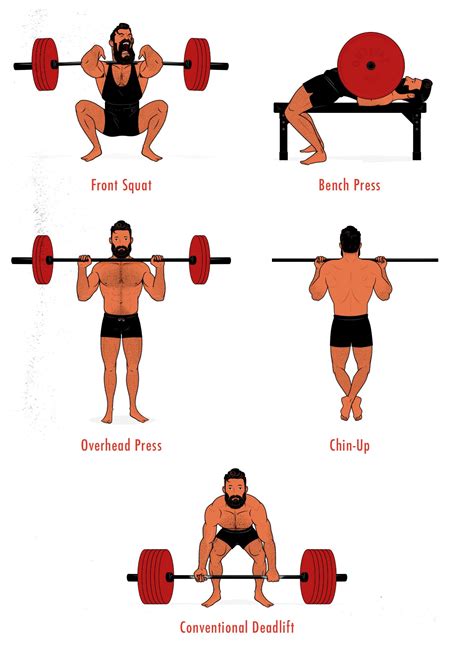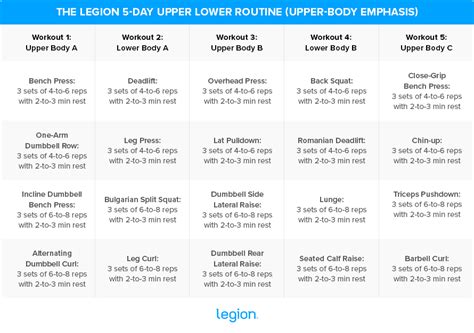What’s the most time-efficient workout split for peak muscle & strength gains?

For many fitness enthusiasts, the challenge isn’t just about training hard, but training smart and efficiently. In a world where time is a premium, optimizing your workout split can be the difference between consistent progress and stagnation. The quest for peak muscle and strength gains often leads to questions about how to structure your training week to get the most out of every minute spent in the gym.
Understanding Workout Splits for Optimal Gains
A workout split defines how you organize your training sessions over the course of a week, allocating specific muscle groups or movement patterns to different days. Popular splits include Full Body, Upper/Lower, Push/Pull/Legs (PPL), and various body-part splits. Each has its merits, but when time efficiency is paramount, some clearly rise above others.
The goal is to provide sufficient stimulus for muscle hypertrophy and strength adaptation while allowing adequate recovery, all within a constrained schedule. This often means prioritizing compound movements and ensuring a high training frequency for each muscle group without overtraining.

The Contenders: Full Body vs. Upper/Lower
When it comes to maximizing gains in minimal time, the Full Body and Upper/Lower splits typically emerge as the front-runners. They allow for a high frequency of training each muscle group, which is a significant driver of both muscle growth and strength development.
Full Body Workouts
A Full Body split involves training all major muscle groups in each session, typically 2-3 times per week. This approach is highly time-efficient because it minimizes gym visits while ensuring each muscle group is hit multiple times within the week. By focusing on compound exercises like squats, deadlifts, presses, and rows, you can work a large amount of muscle mass in a single session. This is ideal for those who can only commit to 2-3 days a week.
Upper/Lower Splits
The Upper/Lower split divides your training into upper body days and lower body days, usually performed 4 times a week (e.g., Upper, Lower, Rest, Upper, Lower, Rest, Rest). This allows for slightly more volume per muscle group per session compared to full-body, while still hitting each group twice a week. It offers a good balance between frequency and per-session volume, making it an excellent choice for those with 4 days available for training.

Key Principles for Time Efficiency
Regardless of the split you choose, several principles enhance time efficiency:
- Compound Movements: Prioritize exercises that work multiple muscle groups simultaneously (e.g., squats, deadlifts, bench press, overhead press, rows). They offer the biggest bang for your buck.
- Progressive Overload: Consistently strive to lift more weight, perform more reps, or improve technique over time. This is the fundamental driver of muscle and strength gains.
- Optimal Frequency: Aim to train each major muscle group 2-3 times per week. This frequency has been shown to be superior for hypertrophy and strength compared to once-a-week training.
- Smart Rest Intervals: Keep rest times between sets purposeful. For strength, longer rests (2-5 minutes) are often needed. For hypertrophy, moderate rests (60-90 seconds) can be effective. Avoid excessive resting.
- Supersets/Circuit Training (Optional): For advanced trainees or those extremely pressed for time, supersetting non-competing muscle groups or using circuit training can further condense workouts, but be mindful of form and fatigue.

Sample Time-Efficient Splits
3-Day Full Body Split
Perform workouts on Monday, Wednesday, Friday, with rest days in between. Each session targets all major muscle groups with 1-2 compound exercises per movement pattern.
- Workout A: Squats, Bench Press, Barbell Rows, Overhead Press
- Workout B: Deadlifts, Incline Dumbbell Press, Pull-ups, Lunges
- Workout C: Leg Press, Dips, Seated Rows, Lateral Raises
(Vary exercises across sessions, focusing on 3-4 sets of 5-12 reps depending on goals).
4-Day Upper/Lower Split
Perform workouts on Monday (Upper), Tuesday (Lower), Thursday (Upper), Friday (Lower).
- Upper Day: Bench Press, Barbell Rows, Overhead Press, Bicep Curls, Tricep Extensions
- Lower Day: Squats, Romanian Deadlifts, Leg Press, Calf Raises, Abs

Tailoring the Split to Your Lifestyle
While Full Body and Upper/Lower splits are highly efficient, the “best” split is ultimately the one you can adhere to consistently. Consider your recovery capacity, sleep quality, stress levels, and nutritional intake. A beginner might thrive on a 3-day Full Body split, while an intermediate lifter with more recovery capacity might benefit from a 4-day Upper/Lower.
Listen to your body, track your progress, and be prepared to adjust your split as your goals and life circumstances evolve. Consistency and progressive overload remain the most critical factors for long-term success, regardless of the specific split chosen.

Conclusion: Your Best Bet for Efficiency
For peak muscle and strength gains with maximum time efficiency, the Full Body (2-3 times/week) and Upper/Lower (4 times/week) splits stand out. Both approaches allow for high training frequency of muscle groups, prioritize compound movements, and can be tailored to fit busy schedules. Choose the split that best aligns with your weekly availability, commit to progressive overload, and stay consistent. Your gains will thank you for it.





